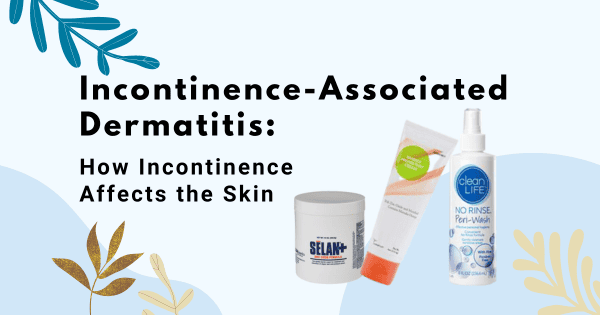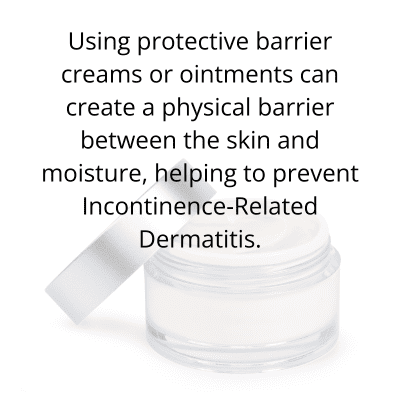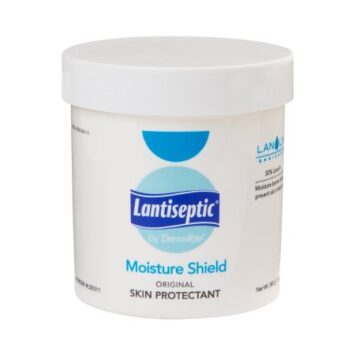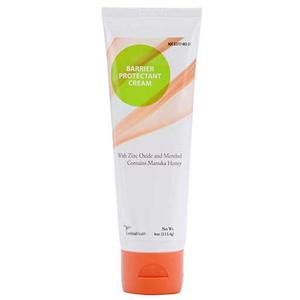Incontinence-Associated Dermatitis (IAD) can affect the millions of people worldwide that have incontinence, particularly among the elderly and those with certain medical conditions. While the physical and emotional challenges of managing incontinence are well-recognized, the impact on skin health often goes unnoticed. In this blog post, we will discuss IAD, its causes, consequences, and preventive measures that can be taken to help prevent it.
Incontinence and Skin Health
Incontinence, whether due to age-related factors, illness, or other underlying causes, can lead to prolonged contact of moisture with the skin. This constant exposure to urine or feces disrupts the skin’s natural protective barrier, making it susceptible to damage and irritation. The resulting condition is Incontinence-Associated Dermatitis, ranging from mild redness to severe skin breakdown.
Causes of Incontinence-Associated Dermatitis
Moisture
Constant exposure to moisture does not allow the skin’s protective barrier to remain dry. The result is skin breakdown. Urine and feces contain enzymes and chemicals that can lead to inflammation and irritation when in contact with the skin for extended periods.
Friction
When the skin is moist, it becomes more fragile and susceptible to friction. Frequent movements, such as repositioning or rubbing against undergarments or bedding, can worsen the irritation and contribute to skin damage.
pH Imbalance
Urine and feces are typically alkaline in nature. Prolonged exposure to these substances can disrupt the skin’s natural pH balance, weakening its protective abilities and making it more susceptible to inflammation.
Consequences of Incontinence-Associated Dermatitis
Incontinence-Associated Dermatitis can have serious implications for an individual’s overall health and quality of life.
Some of the consequences of IAD include:
Pain and Discomfort
IAD can cause considerable pain and discomfort, making it difficult for individuals to perform everyday activities, leading to increased stress and anxiety.
Skin Breakdown
The skin’s natural protective barrier is weakened if it is exposed to moisture and irritants for prolonged periods, which can lead to skin breakdown and damage. This can result in redness, inflammation, and even open sores or ulcers.
Risk of Infection
As the skin barrier is compromised, there is an increased risk of infection. Bacteria and fungi can enter the damaged skin, potentially leading to more severe complications.
Reduced Mobility
The discomfort and pain associated with IAD can limit mobility, making it challenging for individuals to move freely. Reduced mobility can lead to other health issues, such as muscle atrophy and joint problems.
Emotional Impact
Dealing with the physical effects of IAD can take a toll on an individual’s emotional well-being. Embarrassment, shame, and loss of self-esteem are common feelings and can seriously affect a person’s mental health.
Preventive Measures and Management of Incontinence-Associated Dermatitis
Maintain Proper Hygiene
Maintaining proper hygiene is crucial. Cleansing the skin gently with mild, pH-balanced cleansers and patting it dry can help minimize the risk of IAD.
Use Barrier Creams
Using protective barrier creams or ointments can create a physical barrier between the skin and moisture, helping to prevent irritation and skin breakdown.
Regularly Change Incontinence Products
Frequent changing of incontinence products is essential. Avoid allowing moisture to remain in contact with the skin for extended periods.
Regularly Monitor Your Skin
Regularly inspecting the skin for signs of irritation, redness, or breakdown can help catch IAD in its early stages and prevent it from worsening.
Nutrition and Hydration
Maintaining a healthy diet and adequate hydration can help support skin health and its ability to prevent irritations.
Summing it Up
Incontinence-Associated Dermatitis can be a significant concern for those who struggle with incontinence. Understanding the causes, consequences, and preventive steps that can be taken is essential for maintaining healthy skin. If you or someone you care for are dealing with incontinence, consulting a healthcare professional for guidance on managing IAD can help make a significant difference.
Popular Incontinence Products & Skin Care Products for Incontinence-Associated Dermatitis
Disclaimer: The information provided in this blog is intended for general informational purposes only and should not be considered a substitute for professional medical advice, diagnosis, or treatment.






